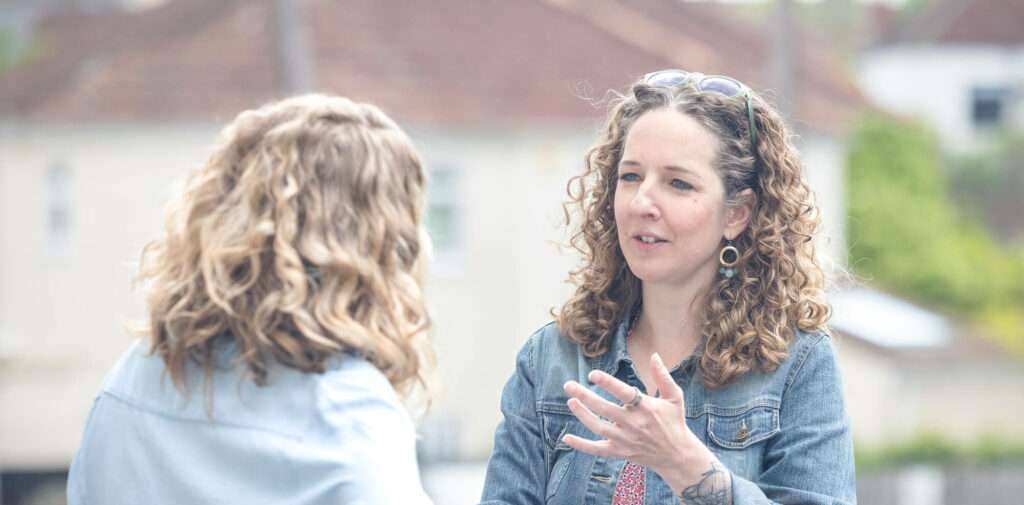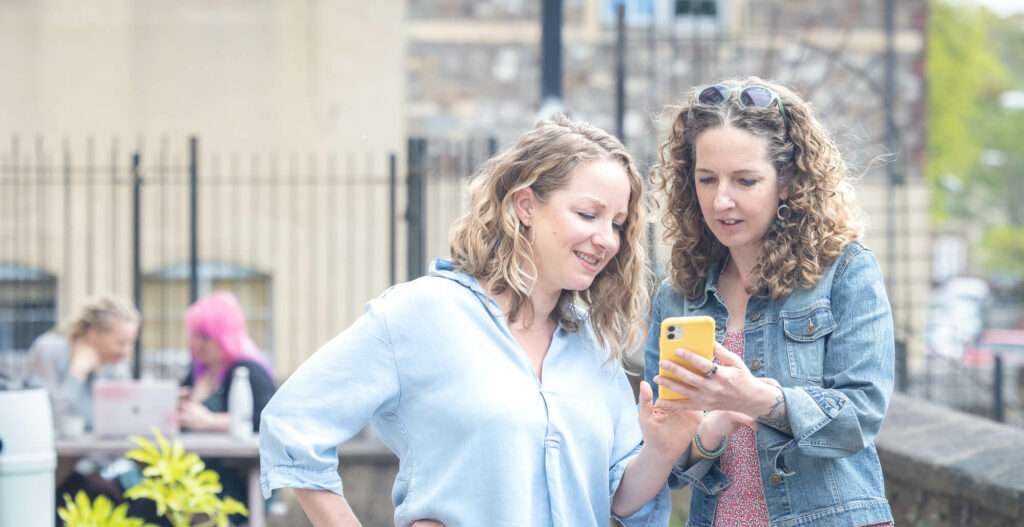

Reinventing the buyer journey: introducing the RH&Co content marketing framework
Every marketer has their favourite way of describing the stages of the buyer journey. Some stick with E St Elmo Lewis’s original AIDA model: Attention, Interest, Desire, Action. Others simplify it to Awareness, Consideration and Decision. Still others prefer an ‘awareness journey’: problem aware, solution aware, most aware and so on.
All are helpful to a degree, especially when planning your broader marketing strategy and channel mix. But if you try to apply them to generating topic ideas for your content marketing plan they’re not always so effective.
That’s why at RH&Co we’ve developed our own framework, based on the process we use to create editorial calendars for our clients. In this post, we’re looking at the five key stages your customer or client is likely to go through and the type of content you should be aiming to create at each one.
TL:DR
- Stage 01: In the dark
- Stage 02: Stuck
- Stage 03: Searching
- Stage 04: Almost ready
- Stage 05: Onboarding
- Bonus: reputation-building content for any stage
- How to use the RH&Co content framework
Stage 01: In the dark
In stage one, your reader is either not aware of their problem or not clear on their real problem.
For example, they might not realise that their app’s security is at risk because they haven’t got a maintenance schedule in place. Or they might know that they’re having stomach problems but not realise they have a wheat intolerance.
Goal
At this stage your goal needs to be to educate your audience and raise their awareness, identifying and exploring the problem until they’re really clear on what it is.
This audience type is right at the beginning of their journey, so this is not the time to rush them towards a sale. Instead, get them to the point where they feel confident about researching solutions.
Content
You could start with a piece of content about the wider issues facing your reader’s industry or share your opinion on why a particular problem is worth addressing.
You could also highlight the warning signs that might indicate a certain problem is looming or challenge them to think about an issue in a new way.

Stage 02: Stuck
Now your audience is clear that there’s a problem – but they have no idea what to do about it.
In the example above, your reader may be panicking about the security risk facing their new app or feeling relieved that their stomach pain has a genuine source. But how do you improve app security or deal with wheat intolerance?
Goal
The goal in this stage should be to add real value, introducing the variety of solutions that are available. It’s important not to focus too heavily on your own solution just yet – sell now and you’ll look self interested rather than genuinely helpful.
Your reader wants the facts laid out for them so that they can make an independent, informed decision about what’s right for them, without feeling pressured.
Content
This is where ‘how to’ content comes into its own. You can keep this content fairly broad, or start to narrow it down a little – although keep some ideas back for the next stage (you’ll see what we mean in a moment).
It’s also helpful to dig beneath the problems your reader is facing and help them understand why they’re having them. After all, it’s hard to fix something if you don’t know what’s causing it. And as humans, we’re naturally curious too.
Stage 03: Searching
Searching is like part two of Stuck. Now the reader is relatively clear on their problem and knows solutions exist. So the next step is for them to work out which of those solutions is best for them.
Is it getting a consultant in, training the in-house team or hiring a new specialist to ensure your app stays on top form? Does it mean cutting out wheat, taking a probiotic supplement or trying reiki?
Goal
This is where you start to explore each solution in depth, giving more facts such as advantages and disadvantages of each, and some idea of how to begin making the right choice.
Again, it’s really important to be honest rather than try to skew the reader towards your own offering. That only leads to unhappy clients and customers. If you’re a poor fit for each other, it’s best get them out of the funnel now so you can concentrate on the better fits.
Content
As we mentioned in the Stuck stage, you can use ‘how to’ content here as well. Only this time it will be more niche, focusing less on ‘how to reduce bloating’, for example, and more on ‘how to choose the right probiotic for wheat intolerance’.
You can also hone your angle to focus specifically on factors that will affect your reader’s choice, such as price, as well as comparing different options like for like.

Stage 04: Almost ready
By now your reader has not only settled on a solution but they’re considering your business – possibly alongside others – in order to make the very best choice.
The non-technical founder who didn’t realise that they had a security risk is now convinced that they do, and that they need a consultant – why should they choose you? Your wheat intolerant buyer is set on taking a probiotic every day but do they get your brand or a cheaper competitor option?
Goal
This is where you provide the granular details that allow your reader to make their decision to spend money with you – or at the very least to get in touch to talk to your sales team.
The emotion we want to stimulate now is certainty, and that is best done with facts rather than hype. Although the marketer’s missive is usually ‘benefits over features’, you need to dig into features here.
Content
Content for the ‘almost ready’ stage needs to contain plenty of detail – prices, processes and anything else your reader might want to know about you.
Here you can create objection busting content to support your sales team with the questions and challenges they face most often, and even try to put off anyone who is a poor fit by writing about why they shouldn’t buy your product or use your service.

Stage 05: Onboarding
So far we’ve used marketing within a marketing context and as a support for the sales process. Your reader has made a commitment to buy from you or use your services – but you’re not done yet.
Now we need to look at how content can support the onboarding process so that your customer or client is happy and more likely to stay or buy again.
Goal
The goal of onboarding content is to tackle ‘buyer’s remorse’, which can happen after you’ve made a purchase decision. That’s where your new customer or client thinks, “Was this really the right decision?” or “Did I get the best deal?” or even simply “Do I really need this?”
Instead, you want them to feel happy with their decision, not just about the product or service but you as a brand. You want them to feel as taken care of now they’re doing business with you as when you were courting them.
Content
Onboarding content will either make a new customer or client’s experience easier or enhance it in some way.
Going back to our original examples, the firm who has employed a consultancy to address their cyber security concerns might appreciate a guide to how to prepare for their first discovery session. The person looking to take probiotics as a way to support their gut health might also appreciate gut-friendly recipes or a four week meal plan.
Bonus: reputation-building content for any stage
Of course, there is some content that doesn’t quite fit neatly into any of these stages but is very much worth including because it can be enormously effective.
We call this reputation-building content and it can engage people wherever they are on their journey or even if they’re not in the market for what you’re selling at all.
Goal
As the name suggests, reputation-building content is all about establishing your brand’s reputation, for example as a thought leader, innovator or expert voice.
By doing this, you create a secure brand position that will pay dividends when people do begin their buyer journey, and you’ll also build connections within your industry and with the wider public.
Content
This is the most difficult type of content for your competitors to copy because it is based on your unique IP, experience or perspective as a business.
It can include opinions and angles on current topics, use case studies to demonstrate real life examples, and give glimpses behind the scenes into your culture, values and ways of working.
How to use the RH&Co content framework
In an ideal world, you would fill every stage of your content framework with well researched, highly valuable and engaging copy – preferably with a strand for each separate product or service you offer, or each industry vertical or client persona group you serve.
The reality is that you’ll need to start somewhere, so think about your main challenges and the quick wins you want to gain.
Perhaps your sales team needs a boost with bottom of funnel ‘almost ready’ content. Or maybe you’re working with an SEO strategist and want to catch people’s attention while they’re (quite literally) in the searching phase.
If you’re an expert-led business – in other words, your goal is to position your brand as an authority in a given subject area – then you need to start working on that reputation-building content.
We’ll be writing more about how to put our framework into practice in due course but in the meantime, if you’d like to talk about getting our support to create your content strategy, get in touch.
Back to hompeage









